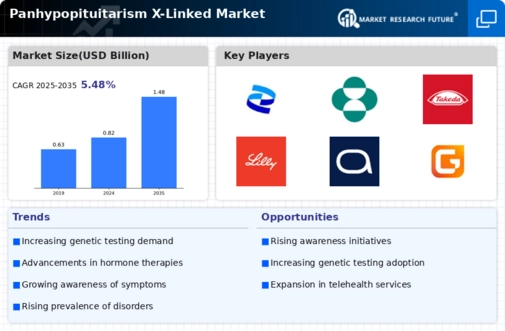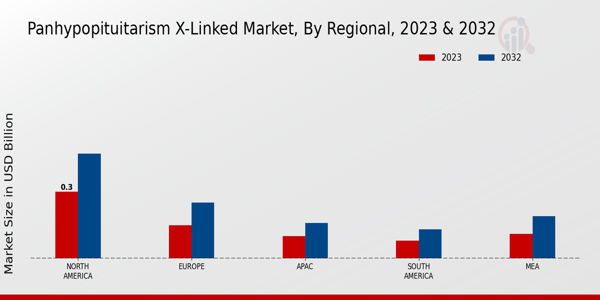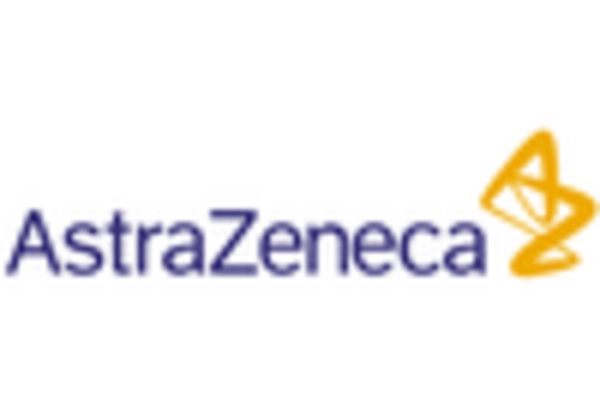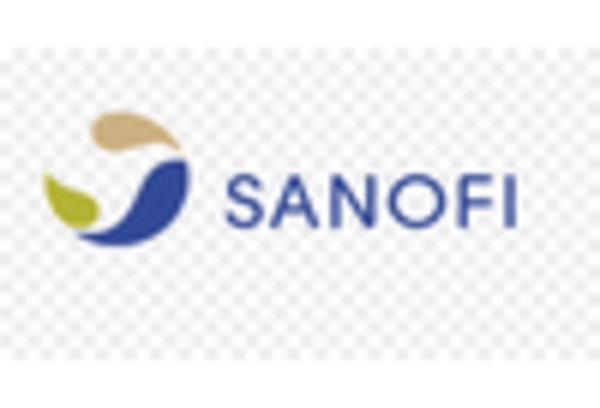Advancements in Genetic Research
The Panhypopituitarism X-Linked Market is experiencing a notable transformation due to advancements in genetic research. Recent studies have elucidated the genetic underpinnings of this condition, leading to improved diagnostic techniques. For instance, the identification of specific gene mutations associated with X-linked panhypopituitarism has facilitated earlier detection and intervention. This progress not only enhances patient outcomes but also drives demand for genetic testing services within the market. Furthermore, the development of gene therapies holds promise for future treatment options, potentially reshaping the therapeutic landscape. As research continues to evolve, the Panhypopituitarism X-Linked Market is likely to witness increased investment in genetic research initiatives, fostering innovation and expanding treatment avenues.
Increased Awareness and Advocacy
In recent years, there has been a marked increase in awareness and advocacy surrounding panhypopituitarism, particularly its X-linked form. Patient advocacy groups and healthcare organizations are actively promoting education about the condition, which has led to heightened recognition among healthcare professionals and the general public. This surge in awareness is crucial, as it encourages individuals to seek medical advice sooner, thereby improving diagnosis rates. The Panhypopituitarism X-Linked Market benefits from this trend, as increased awareness translates into a greater demand for treatment options and support services. Moreover, advocacy efforts are likely to influence policy changes, potentially leading to improved healthcare access and funding for research initiatives.
Investment in Rare Disease Research
Investment in research focused on rare diseases, including panhypopituitarism, is gaining momentum within the Panhypopituitarism X-Linked Market. Pharmaceutical companies and research institutions are increasingly recognizing the potential for developing targeted therapies for rare conditions. This trend is bolstered by incentives such as orphan drug designations, which encourage innovation in the treatment of rare diseases. As funding for research initiatives grows, the Panhypopituitarism X-Linked Market is likely to see advancements in treatment options, including novel pharmacological therapies and gene-based interventions. This influx of investment not only enhances the understanding of the disease but also fosters collaboration among stakeholders, ultimately benefiting patients and healthcare providers alike.
Rising Incidence of Hormonal Disorders
The Panhypopituitarism X-Linked Market is influenced by the rising incidence of hormonal disorders, which includes conditions like panhypopituitarism. As awareness of hormonal imbalances increases, more individuals are being diagnosed with related disorders. This trend is particularly relevant for X-linked forms of panhypopituitarism, which may be underreported due to lack of awareness. The growing recognition of these conditions is likely to lead to an increase in demand for diagnostic and therapeutic options. Furthermore, healthcare providers are becoming more vigilant in screening for hormonal disorders, which could result in earlier interventions and improved patient outcomes. Consequently, the Panhypopituitarism X-Linked Market stands to benefit from this rising incidence, as it drives the need for specialized care and treatment.
Technological Integration in Healthcare
The integration of technology into healthcare systems is significantly impacting the Panhypopituitarism X-Linked Market. Telemedicine, electronic health records, and mobile health applications are enhancing patient management and follow-up care. These technological advancements facilitate remote consultations, allowing patients to access specialized care without geographical constraints. Additionally, data analytics tools are being employed to track patient outcomes and treatment efficacy, providing valuable insights for healthcare providers. As technology continues to evolve, the Panhypopituitarism X-Linked Market is likely to see an increase in the adoption of innovative solutions that improve patient engagement and streamline care processes. This trend may also attract new stakeholders to the market, further driving growth.


















Leave a Comment